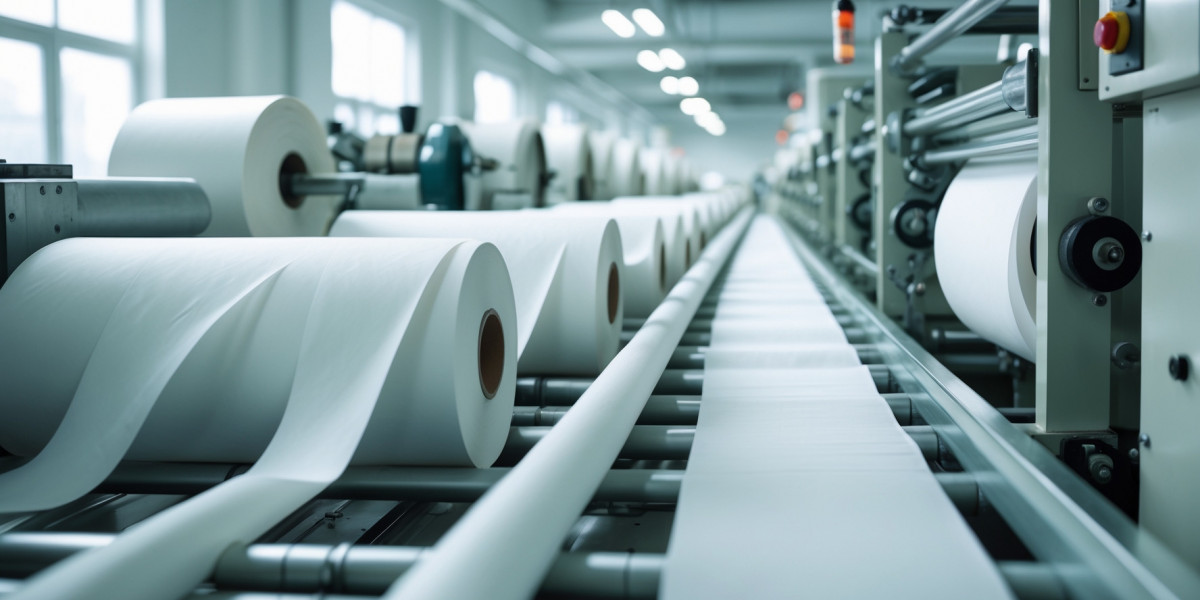Understanding the Factors That Shape Manufacturing Costs
Tissue paper is a widely used product across households, commercial setups, and industries. Although it appears simple in form, the process of producing tissue paper involves multiple cost layers that determine its final price in the market.
From sourcing raw materials to energy costs and packaging, each step contributes to the overall pricing model. For businesses involved in tissue paper manufacturing or those looking to understand supplier pricing, breaking down these costs offers valuable insights.
This guide explains how manufacturers calculate the cost of tissue paper production, covering everything from initial input to the final product.
Raw Material Costs
The first and often the most significant cost in tissue paper production is raw material. The two main sources are:
Virgin pulp: Sourced from wood, bamboo, or sugarcane, known for higher softness and strength
Recycled pulp: Made from waste paper and used for cost-effective or eco-conscious variants
The price of pulp can vary based on global market demand, shipping costs, and quality grade. Virgin pulp tends to be more expensive and is used in premium tissue paper products, while recycled pulp lowers costs but may affect texture and absorbency.
Additional chemical treatments, such as softening agents or whitening solutions, add to the material cost depending on the quality expectations.
Typical Raw Material Expenses
Virgin pulp per ton: Higher but preferred for softness
Recycled pulp per ton: Lower but suitable for basic-grade tissue
Additives and agents: Aloe, lotion, or fragrance add a marginal increase
For high-volume manufacturers, sourcing directly from pulp mills can reduce expenses, especially if domestic options are available.
Machinery and Equipment
Tissue paper production requires specialized machinery that includes pulp refiners, tissue machines, rewinding units, and cutting equipment. Most production lines are semi-automated or fully automated, depending on the scale.
The upfront investment in machinery is high, but operational costs over time are more relevant when calculating ongoing production cost per unit.
Operational machinery costs include:
Maintenance and servicing
Power consumption
Machine operator salaries
Spare parts and replacements
High-speed machines produce tissue at a faster rate, lowering the cost per roll or pack over time. However, they also require higher electricity input and regular technical support.
Labor and Workforce
Manufacturing units need both skilled and unskilled labor. Roles may include machine operators, technicians, packers, quality control staff, supervisors, and administrative personnel.
The size of the workforce depends on:
Production volume
Level of automation
Number of shifts per day
Labor costs are higher in regions with strict labor laws or urban settings. In Pakistan, labor may be relatively affordable compared to other manufacturing hubs, but efficiency and training still influence the cost of operations.
Utility Expenses
Tissue paper production consumes a large amount of water and electricity. Water is essential for pulp preparation, washing, and pressing processes, while electricity powers machinery, conveyor systems, and climate control systems.
Utilities represent a significant recurring expense, especially in larger facilities that operate round-the-clock. Unstable energy prices can influence this portion of the budget, making power management strategies crucial for cost optimization.
Packaging and Branding
Once produced, tissue paper must be packaged in a format that suits its end use. Options include:
Rolls for toilet paper
Flat-folds for facial tissue or dispensers
Napkins in stacked packs
Boxed tissues with branded sleeves
Packaging materials like plastic wrap, cardboard, or paper sleeves add a considerable amount to the per-unit cost. In addition, customized printing or branding requires additional setup and ink costs.
Packaging must also meet hygiene standards, especially for tissue paper that will be used in public settings or medical environments.
Logistics and Transportation
Finished goods need to be stored, transported, and delivered to distribution centers or clients. These logistics costs include:
Fuel charges
Vehicle maintenance
Warehousing fees
Loading and unloading labor
Manufacturers often manage distribution through wholesalers or directly via contracts with retail chains. The distance between production units and sales markets influences how much is spent on transportation.
Efficient logistics planning — including bulk shipping and optimized routing — helps keep this cost predictable and manageable.
Quality Control and Waste Management
Maintaining consistent quality is crucial in the tissue paper industry. Poor-quality sheets, uneven rolls, or packaging defects can result in waste and product returns.
Quality control systems monitor:
Sheet thickness
Absorbency
Smoothness
Packaging consistency
Waste generated during production must be either recycled or disposed of properly, and this involves additional handling costs. Using in-house recycling systems can help recover some value, particularly when dealing with paper trimmings or overproduction.
Taxes and Regulatory Costs
Depending on the region, manufacturers may be required to pay:
Sales tax or value-added tax
Import duties on machinery or raw materials
Environmental compliance fees
Business licensing and safety audits
These factors may vary depending on the size of the company and the location of the manufacturing unit. For example, an export-focused facility may receive tax exemptions or rebates, affecting its overall cost structure.
Average Cost Breakdown by Category
| Cost Component | Approximate Share in Total Cost |
|---|---|
| Raw Materials | 40% |
| Labor | 10% |
| Utilities | 15% |
| Packaging | 10% |
| Machinery Depreciation | 5% |
| Logistics | 10% |
| Quality Control | 5% |
| Regulatory Fees | 5% |
This table provides a general estimate and may vary across manufacturers and production scales.
Importance of Product Type in Cost Planning
Not all tissue paper products have the same cost structure. Understanding the types of tissue paper helps in projecting the total cost more accurately. Facial tissue boxes may require additional finishing and packaging, while napkins may be produced in bulk at lower margins.
By identifying which product line is more cost-effective or scalable, manufacturers and suppliers can better control pricing and profitability.
Final Thoughts on Cost Management
Tissue paper production involves multiple cost factors that need constant monitoring and optimization. Whether it’s sourcing pulp at competitive rates, managing utility usage, or designing cost-effective packaging, each area contributes to the final price.
Many businesses now look for tissue products that align with both function and brand identity. This is where private label tissue paper makes an impact. It allows retailers, hotels, clinics, and even startups to deliver a consistent product experience while maintaining full control over cost, branding, and customer perception.
For long-term success, understanding the cost structure is as important as the production itself.








